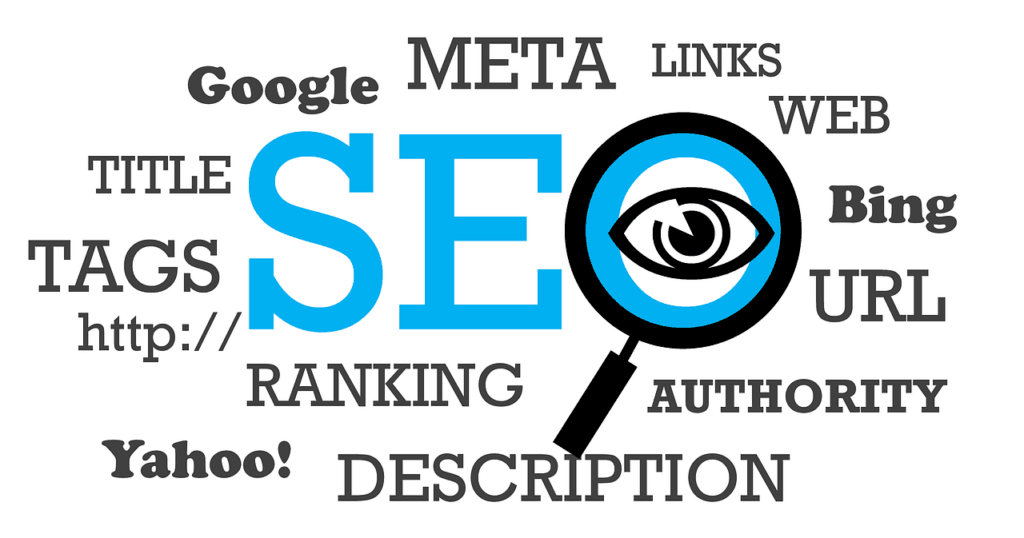Current Marketing Landscape
Understanding the current marketing landscape is essential for you as a business owner or marketing executive. Trends are evolving rapidly due to external factors, including the Covid-19 pandemic and advancements in technology, especially through artificial intelligence (AI).
Impact of Covid-19
The Covid-19 pandemic has significantly shifted consumer behavior and preferences. Organizations are redefining their marketing strategies to adapt to these changes. As a result, the way companies build and promote their brands has transformed profoundly, necessitating an understanding of current marketing trends. An emphasis on digital experiences has emerged as traditional in-person engagements transitioned to online formats, highlighting the need for companies to invest in technology for personalized customer engagement. According to a report by Harvard Business Review, businesses that embrace these shifts will be better positioned to meet the evolving expectations of consumers.
| Impact Area | Pre-Covid Approach | Post-Covid Approach |
|---|---|---|
| Consumer Engagement | In-person events | Online interactions |
| Brand Promotion | Traditional advertising | Digital and social media efforts |
| Customer Expectations | Basic service | Enhanced digital experiences |
Role of AI in Marketing
Artificial Intelligence is now a game-changer in the marketing domain. Nearly 90% of marketers believe that their organizations must increase AI usage to maintain competitiveness and meet customer expectations, as reported by Mailchimp. By 2025, teams that integrate AI into their marketing strategies are projected to spend 75% more on strategic activities rather than content creation. AI will automate these processes, allowing your team to focus on analytics interpretation and implementing valuable insights from data (Santa Clara University).
Through AI-driven analytics, marketers can identify consumer behavior trends and personalize marketing efforts, enhancing the overall customer experience. This shift signifies a pivotal moment in marketing where technology and strategy intertwine, enabling better-targeted messaging.
| AI Application | Current Usage | Future Projection |
|---|---|---|
| Content Creation | 25% manual effort | 75% automated by 2025 |
| Analytics Insights | Limited integration | Main focus on strategic decision-making |
The combination of these factors underlines the necessity for businesses to adapt their marketing strategies informed by the latest marketing trends. Embracing technology and understanding consumer shifts post-pandemic positions your organization for sustained growth and relevance in today’s marketplace. For insights into digital marketing trends, visit digital marketing trends.
Emerging Marketing Channels
In the rapidly evolving marketing landscape, you must be aware of emerging channels that can significantly enhance your brand’s visibility and engagement. Below are some of the latest marketing trends that you can leverage for your business.
TikTok Marketing
With approximately 850 million monthly active users as of September 2020, TikTok has become a powerful platform for brands looking to connect with a younger audience aged between 13 and 40. The app’s short, engaging video format allows for creative storytelling and interactive content that can lead to high levels of audience engagement (LinkedIn).
| Key Metric | TikTok |
|---|---|
| Monthly Active Users | 850 million |
| Age Group Focus | 13 – 40 |
Instagram Reels Marketing
Instagram Reels, launched in August 2020, offers a new opportunity for marketers to reach an under-34 demographic, as 60% of TikTok users do not use Facebook and 30% do not use Instagram. With over 1 billion active users, Instagram Reels allows for dynamic engagement through short video clips, making it a lucrative option for your marketing strategy (LinkedIn).
| Key Metric | Instagram Reels |
|---|---|
| Monthly Active Users | 1 billion |
| Age Group Focus | Under 34 |
Slack Communities for Marketing
Slack has become a hub for professional networking and community engagement. Creating or participating in Slack communities allows you to engage directly with your target audience and potential customers. These channels facilitate open communication, lead nurturing, and the sharing of valuable insights in real-time.
Virtual Summits in Marketing
Post-COVID, virtual summits have emerged as an essential marketing channel. They enable you to reach a broader audience without the constraints of physical events. These summits serve as platforms to showcase industry knowledge, promote courses, or discuss new products, thereby nurturing leads effectively (LinkedIn).
| Key Metric | Virtual Summits |
|---|---|
| Audience Reach | Global |
| Lead Nurturing | High |
Snapchat Marketing
Snapchat remains a popular platform among younger audiences, particularly those aged 13-29. Approximately 90% of internet users in the 13-24 age demographic use Snapchat. The platform’s innovative features, such as filters and ephemeral content, lead to high engagement levels and a unique way to connect with potential customers (LinkedIn).
| Key Metric | Snapchat |
|---|---|
| Age Group Focus | 13 – 29 |
| Engagement Level | High |
By leveraging these various emerging marketing channels, you can enhance your outreach and engagement, ensuring you stay ahead in the competitive landscape. For more insights, check out our section on digital marketing trends or explore more about consumer behavior trends.
AI Advancements in Marketing
The integration of Artificial Intelligence (AI) in marketing is transforming how businesses engage with customers and approach their strategies. By leveraging AI technologies, you can enhance your marketing initiatives and stay ahead of the latest marketing trends.
Future AI Applications
The future of AI in marketing is set to offer numerous innovative applications that will redefine marketing strategies. Key advancements include:
- Computer Vision: This technology will allow marketers to analyze visual content, understanding customer preferences better and providing personalized experiences.
- AI Chatbots: These tools will facilitate targeted messaging, enhancing customer interaction through responsive and intelligent dialogues.
- Predictive and Prescriptive Analytics: Utilizing AI in these areas will help develop highly targeted ads and optimize marketing decisions.
- Responsible AI Development: This will ensure that AI systems are fair, secure, reliable, inclusive, and transparent, fostering trust among customers.
According to a Mailchimp report, nearly 90% of marketers believe that increasing AI usage is vital for maintaining competitiveness and meeting evolving customer expectations.
AI for Customer Engagement
AI technologies significantly improve customer engagement by enabling brands to understand and interpret customer intent. This includes:
- Optimizing Social Content: AI can analyze vast amounts of data to identify trending topics, user preferences, and content performance, allowing you to tailor your social media strategy.
- Enhanced Brand Management: AI aids in monitoring brand reputation and engagement online, offering insights that can refine marketing efforts.
- Strengthening Brand Relationships: Personalized marketing campaigns powered by AI can create deeper connections with customers, fostering loyalty and repeat business (Sprout Social).
These advancements enable you to create targeted campaigns that resonate with your audience and increase your overall marketing effectiveness.
Predictive Analytics in Marketing
Predictive analytics is an essential component of modern marketing strategies that harnesses AI to forecast customer behavior and trends. Here are some advantages of employing predictive analytics:
| Benefit | Description |
|---|---|
| Targeted Advertising | AI can analyze customer data to predict which segments are most likely to convert, allowing for more focused advertising efforts. |
| Customer Insights | Understanding potential future behaviors helps in crafting personalized experiences that cater to individual customer needs. |
| Resource Allocation | Marketers can optimize their budgets by identifying high-potential channels for their campaigns based on predictive models. |
By 2025, it’s projected that marketing teams utilizing AI will allocate 75% of their efforts towards strategic activities rather than just content production, enabling more insightful data interpretation and implementation (Santa Clara University). Embracing these tools will keep you at the forefront of latest marketing trends and enhance your overall marketing strategy.
This integration of AI into your marketing practices is not just a trend but a necessity for growth and innovation in an increasingly competitive landscape.
Post-Pandemic Marketing Strategies
As businesses adapt to the changes brought by the pandemic, implementing effective post-pandemic marketing strategies is crucial for success. Here are key strategies to consider:
Importance of Digital Experiences
The pandemic has accelerated the shift towards online interactions, reshaping consumer expectations. You need to prioritize creating seamless digital experiences to enhance customer engagement. Leveraging data and investing in technology will enable personalized interactions that meet evolving consumer demands. Engaging customers in the digital realm is now fundamental to staying competitive. For insights on current marketing trends, explore the latest strategies in digital engagement.
Prioritizing Brand Experience
The significance of brand experience has been magnified during the pandemic. Consumers are increasingly valuing transparency, sustainability, and social responsibility. You should focus on communicating your brand values authentically. This will resonate with your audience, building trust and loyalty. Brands that prioritize these aspects are more likely to thrive in the current landscape. For a deeper dive into customer experience trends, consider how your brand aligns with consumer expectations.
Content Marketing Opportunities
The transition to online behavior has opened new avenues for content marketing. Consumers are engaging more with digital content, such as how-to videos, tutorials, and virtual events. By optimizing your content marketing strategies, you can effectively boost brand awareness and create unique brand experiences. Ensure your content is tailored to meet the needs of your audience. For more on this topic, check out our piece on content marketing trends.
| Content Type | Engagement Increase (%) |
|---|---|
| How-to Videos | 85 |
| Tutorials | 75 |
| Virtual Events | 90 |
Customer Retention Strategies
Post-pandemic, customer retention should be a top priority. The cost of acquiring new customers often exceeds that of retaining existing ones. Implement loyalty programs and personalized marketing efforts to keep customers engaged. Regularly soliciting feedback can also help enhance their experience. For additional tactics, refer to our insights on the latest retail marketing trends.
Data Analytics for Informed Decisions
Utilizing data analytics is essential for informed decision-making. Analyzing consumer behavior trends helps you understand your audience’s preferences and needs. This insight informs your marketing strategies, enabling you to respond proactively to market changes. Embracing analytics will provide a competitive edge in navigating the evolving landscape. You can discover more about integrating data in marketing by visiting our article on digital marketing trends.
Adopting these post-pandemic strategies will position your business for success in a rapidly changing marketing environment. Staying informed on the latest trends will ensure you remain adaptable and prepared for future challenges.
Adapting to Evolving Trends
Adapting to the latest marketing trends is crucial for your business’s success. As consumer preferences shift, staying ahead of the curve requires a comprehensive understanding of these changes and a proactive approach to your strategies.
Understanding Consumer Preferences
Consumer preferences are constantly evolving, shaped by technology, culture, social media, and environmental issues. To remain relevant and profitable, it is essential to know your audience by understanding their values, needs, and expectations. Research tools like surveys, interviews, and customer feedback can provide valuable insights (LinkedIn).
The table below summarizes common factors influencing consumer preferences:
| Influencing Factor | Description |
|---|---|
| Technology | Advances impact how consumers interact with brands. |
| Culture | Shift in social norms and values influence buying behavior. |
| Social Media | Platforms shape trends and foster direct engagement with brands. |
| Environmental Issues | Increasing awareness prompts consumers to favor sustainable products. |
Proactive Approach to Change
To effectively adapt to shifting consumer preferences, a proactive approach is essential. This includes conducting market research, leveraging data analytics, engaging with your audience, and prioritizing innovation. By consistently evaluating market dynamics, you can identify emerging opportunities and threats.
Consider employing the following practices:
- Evaluate your target audience regularly.
- Use data analytics tools to gain insights.
- Foster open communication with customers.
Monitoring Industry Trends
Monitoring trends and assessing competitors are critical components of your strategy. Identifying gaps in the market or recognizing new opportunities enables you to adjust your approach swiftly. Resources such as industry reports, blogs, and social media channels serve as valuable tools for tracking the latest developments.LinkedIn.
Here are a few methods for monitoring industry trends:
| Method | Description |
|---|---|
| Industry Reports | Comprehensive analyses that reveal market trends. |
| Social Media | Tracking conversations and emerging voices in your sector. |
| Blogs and Newsletters | Staying informed about the latest insights from experts. |
Flexibility and Innovation
Flexibility and innovation are key strategies to successfully adapt to changing consumer preferences. Regular experimentation and readiness to pivot your offerings or messaging can significantly impact your competitiveness. Engaging with customers through feedback and interactions will also help guide your innovation efforts (LinkedIn).
Embracing a culture of adaptability can involve:
- Encouraging team collaboration and brainstorming.
- Implementing agile processes for rapid response to changes.
- Regularly reviewing and updating your marketing strategies.
By focusing on understanding consumer preferences, adopting a proactive approach, monitoring trends, and fostering innovation, you can effectively navigate the latest marketing trends and maintain a strong presence in your industry. For more insights, check out our sections on current marketing trends and digital marketing trends.
Influencer Marketing Trends
As you navigate the current marketing landscape, embracing influencer marketing trends can significantly boost your brand’s visibility and engagement. Here are some key trends to consider in your strategy.
Rise of Micro and Nano-Influencers
One prominent trend is the increasing popularity of micro and nano-influencers. Recent studies indicate that 43% of marketers reported an uptick in using these types of influencers in 2024 (Influencer Marketing Hub). Unlike their macro counterparts, who often focus on broad audiences, micro and nano-influencers offer specialized knowledge and tend to foster authentic connections with their followers. This shift towards niche influencers can yield a higher return on investment (ROI) as consumers value sincerity and expertise over sheer follower counts.
| Influencer Type | Average Followers | Engagement Rate |
|---|---|---|
| Macro-Influencers | 100k – 1M | 1% – 3% |
| Micro-Influencers | 10k – 100k | 3% – 8% |
| Nano-Influencers | Below 10k | 5% – 10% |
AI Integration in Influencer Marketing
Another emerging trend is the integration of artificial intelligence (AI) in influencer marketing. AI tools can analyze data on consumer behavior and preferences, aiding in the selection of the right influencers for your campaigns. These tools enhance personalization and efficiency, allowing you to target your audience more effectively. AI can also be beneficial in managing campaign performance and optimizing budgets, ensuring resources are used wisely.
Preferred Platforms for Influencer Marketing
Knowing which platforms are trending can guide your influencer marketing strategy. Currently, TikTok, Instagram, and YouTube are leading platforms for influencer engagements. Each platform provides unique opportunities to connect with diverse audience segments. Adjusting your campaigns according to platform-specific best practices can enhance your reach and effectiveness.
| Platform | Key Features | Ideal Influencer Type |
|---|---|---|
| TikTok | Short, engaging videos | Nano and Micro |
| Visual content | Micro and Macro | |
| YouTube | Long-form videos | Macro |
Long-term Influencer Partnerships
Establishing long-term partnerships with influencers is becoming more common. This strategy promotes brand loyalty and authenticity, as consumers appreciate consistent messaging from trusted influencers. Nurturing these relationships can translate into sustained engagement and ultimately drive sales.
Increasing Spending on TikTok Marketing
Your marketing budget may need an adjustment, especially with the increasing spending on TikTok marketing. This platform’s dynamic nature and extensive reach make it a powerful tool for engaging younger demographics. Brands are investing more significantly in TikTok influencer partnerships, recognizing the platform’s potential to create viral content and drive brand awareness.
Stay up-to-date with current marketing trends and leverage these insights to refine your influencer marketing strategies. Integrating these trends into your overall approach can enhance consumer engagement and drive better results for your business. For additional insights, explore our resources on digital marketing trends and social media marketing trends.
Top Marketing Channels
Identifying and leveraging the best marketing channels is crucial for optimizing your strategy. As a business leader, staying abreast of the latest marketing trends can significantly enhance your outreach and engagement efforts.
Content Marketing Strategies
Content marketing remains one of the foremost strategies for attracting users to your website. Through well-crafted content and search engine optimization (SEO) practices, you can improve visibility and drive traffic to your business. Compelling blog posts, articles, infographics, and videos can engage your audience and establish your brand as an authority in your field. For more insights on this, refer to our article on content marketing trends.
| Key Benefits of Content Marketing |
|---|
| Builds brand authority |
| Enhances SEO visibility |
| Encourages audience engagement |
| Increases website traffic |
Social Media Marketing Importance
Social media marketing plays a pivotal role in today’s digital landscape, with over 72% of Americans utilizing at least one social media platform (Forbes). Platforms such as YouTube, Facebook, Instagram, and Pinterest serve as powerful tools for boosting brand awareness, enhancing customer relationships, and maintaining consistent messaging. It is advisable to tailor your approach based on your target audience’s preferred platforms. For detailed strategies, explore our insights on social media marketing trends.
| Key Social Media Platforms | Benefits |
|---|---|
| YouTube | Video storytelling and engagement |
| Wide reach and community building | |
| Visual appeal and influencer marketing | |
| Driving traffic through visuals |
Trend Towards Video Ads
Video advertising is a significant trend that captivates audiences by delivering compelling narratives and evoking emotions (Forbes). With platforms increasingly favoring video content, incorporating video ads into your campaigns can foster a strong connection with viewers. Use engaging visuals and storytelling techniques to make your brand memorable. For more on this topic, read about video marketing trends.
| Advantages of Video Ads |
|---|
| Increases engagement rates |
| Enhances brand recall |
| Encourages sharing on social media |
| Provides higher click-through rates |
SMS Marketing Effectiveness
SMS marketing has emerged as an effective channel for directly connecting with consumers. With faster response rates compared to email marketing, SMS allows you to communicate brand messages quickly and engagingly (Forbes). Consider leveraging this channel for promotions, updates, and personalized communication.
| Benefits of SMS Marketing |
|---|
| High open rates (over 90%) |
| Immediate reach to customers |
| Personalized customer interactions |
| Cost-effective for promotions |
Impact of Direct Mail Marketing
Despite the digital focus in marketing, direct mail marketing continues to prove its relevance with high return on investment (ROI) and emotional impact (Forbes). Offering a tangible experience, direct mail can create a personal connection that enhances customer loyalty and engagement. Consider incorporating direct mail into your multichannel marketing strategy for effective results.
| Advantages of Direct Mail Marketing |
|---|
| Personal touch with recipients |
| Higher engagement compared to email |
| Effective for targeted campaigns |
| Long shelf life and visibility |
By understanding and utilizing these key marketing channels, you can position your business to capitalize on the latest marketing trends and drive growth effectively.




















